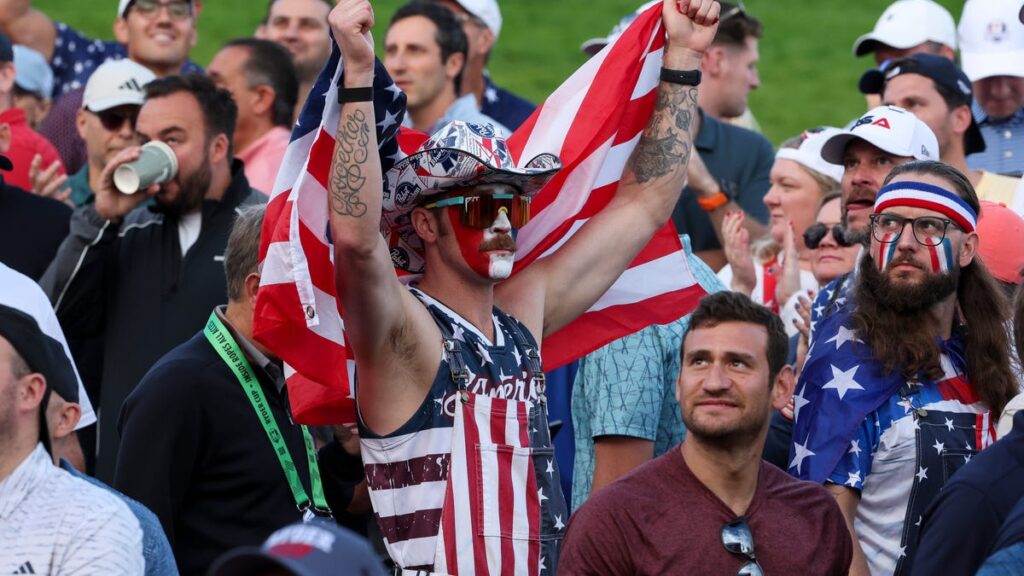There are two places in golf where confidence often outpaces competence. One is the U.S. Ryder Cup team room, where the gospel of American exceptionalism is preached until the very last moment before it is drowned out by the chants of European fans hailing another victory. The other is the headquarters of the PGA of America, long a wellspring of self-assured guff by a preening officer class, and which was so rudely exposed by the antics of the imbecilic slapnuts at Bethpage Black.
Postmortems on the 45th Ryder Cup will focus on the cadaver of Keegan Bradley’s squad. There’ll be revisionist criticism of his appointment as captain, second-guessing of his decisions in the field, head-shaking about the performance of his top players, belly-aching about the “envelope rule” that has been part of the captain’s contract since the ‘70s (now apparently an inappropriate gentlemen’s agreement in an era when gentlemen no longer agree).
But the finger-pointing at the U.S. team should wait. More urgent criticism should be squarely directed at the PGA of America for its shoddy mishandling of the event.
If the metric for a successful Ryder Cup is solely commercial, then Bethpage was cause for celebration at PGA headquarters since there were more sponsors than you’d see on a car doing laps at Talladega. Shy of selling access to premium portajohns, every dollar was expertly extracted from the week. If another standard of success is that it be a worthy shop window for the sport, or that competitors and spectators be safe and respected, then Bethpage was an ignominious embarrassment.
Last week, the PGA of America finally reaped what it sowed over 12 years since announcing Bethpage as the venue. This Ryder Cup was continuously marketed as the biggest, loudest, rowdiest ever, always carefully couched in language about the “energy” of the New York crowd. The organizers knew exactly what Bethpage “energy” is, and how ugly it can get. They saw it at the 2019 PGA Championship, and at the ’02 and ’09 U.S. Opens (the latter was tamer only because heavy rain doused the douches). Yet the messaging tacitly encouraged boorishness, in effect green-lighting the debacle we saw unfold.
When fans predictably hurled invective (and beer) at players and their families, the PGA of America was slow to respond and impotent when they did. Security planning and enforcement were exposed as woefully inadequate. That put Europeans in the crosshairs and forced U.S. team members to police the gallery in a noble but futile effort to ensure fair play. By the time the first tee emcee was shown the door for leading a vulgar chant of “F—- you, Rory!”, it was painfully apparent that the Ryder Cup has far outgrown the PGA of America’s core competencies.
The organization is interested in the Ryder Cup’s revenues but not in its responsibilities. The task force formed after the rancorous U.S. loss in 2014 was all about deferring to the players any matters that could involve public blowback, like choosing skippers, making captain’s picks, and actually winning the Cup. The appointment of Bradley was a change in direction — the buddy system borne of the task force didn’t deliver — but it was a 360-degree change, and returned the team back from whence it began.
The U.S. team still operates as it always has: prone to choosing “savior” captains who can rally the troops; reliant on performative theatrics, as though flag-waving and fist-pumping compensate for the absence of a battle plan; lacking the backroom support apparatus that has propelled Europe’s success for the past 30 years; and willfully negligent in applying learnings of what has and hasn’t worked into a proven playbook that’s portable from team to team.
Bethpage ’25 was a sharp reminder for the slow learners of Gleneagles ’14.
Even the liquored boors at Bethpage could write the script for what will now follow — calls for Tiger Woods to lead the team to Ireland in two years, because who has more stature to turn things around? But the U.S. has had plenty of accomplished captains who commanded respect. What it needs is one with a vision for success and the chops to insist it be properly resourced. It needs its Tony Jacklin. If Bradley had a vision, he hasn’t articulated it. More importantly, the PGA of America never asked for it. He was offered the job without a single conversation about how he would execute it.
Last week laid bare the institutional weaknesses in how the Ryder Cup is administered on this shore of the Atlantic. One of golf’s prime assets was devalued by a garish spectacle of drunken abuse, and more of the same awaits if the PGA Championship goes back to Bethpage in 2033 as scheduled. It’s time the PGA of America forged a revenue-sharing deal with a partner better equipped to realize the potential of its championships, and use the generational wealth from that to fund its core trade association mission of supporting members.
Only two entities in golf have the cash reserves to make such an arrangement viable: the PGA Tour and LIV. Only one of them has a measure of organizational competence. The Tour’s new CEO, Brian Rolapp, is a deal maker and has billions of investment dollars to spend, but even he would struggle to dislodge the legions of snouts burrowed deep into the PGA of America’s trough. And such an acquisition would force an awkward reckoning for Rolapp on the Presidents Cup, the existence of which does nothing to aid the U.S. Ryder Cup effort, and could be credibly argued to undermine it.
The Ryder Cup is a shop window for the sport, and this one left a lousy impression for prospective customers. The best thing for its long-term future is to hang a sign: “Under New Management.”
Read the full article here


